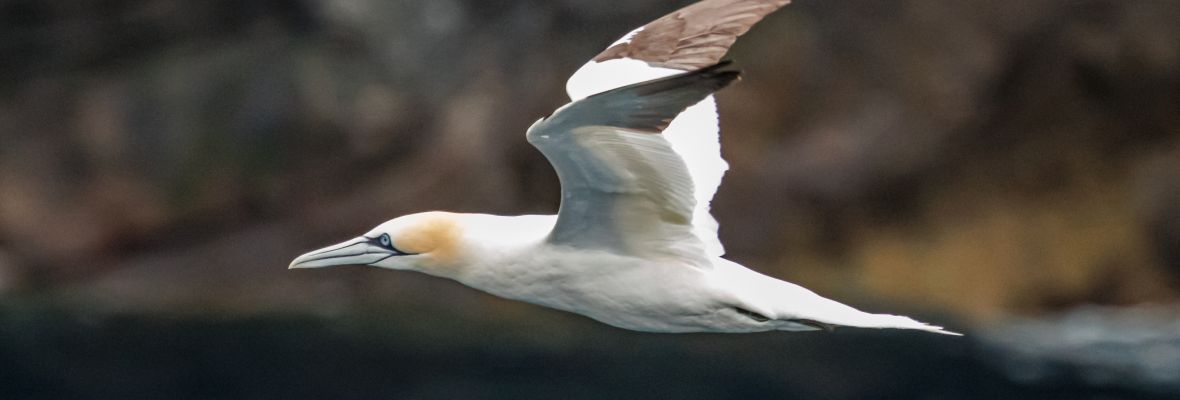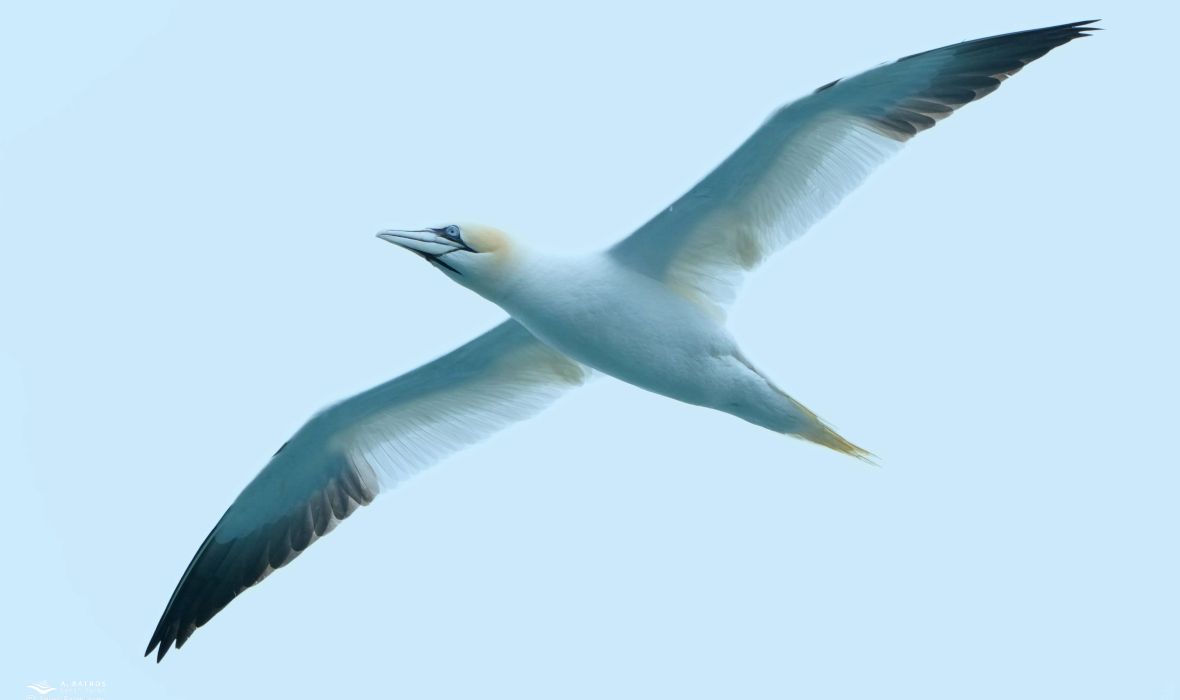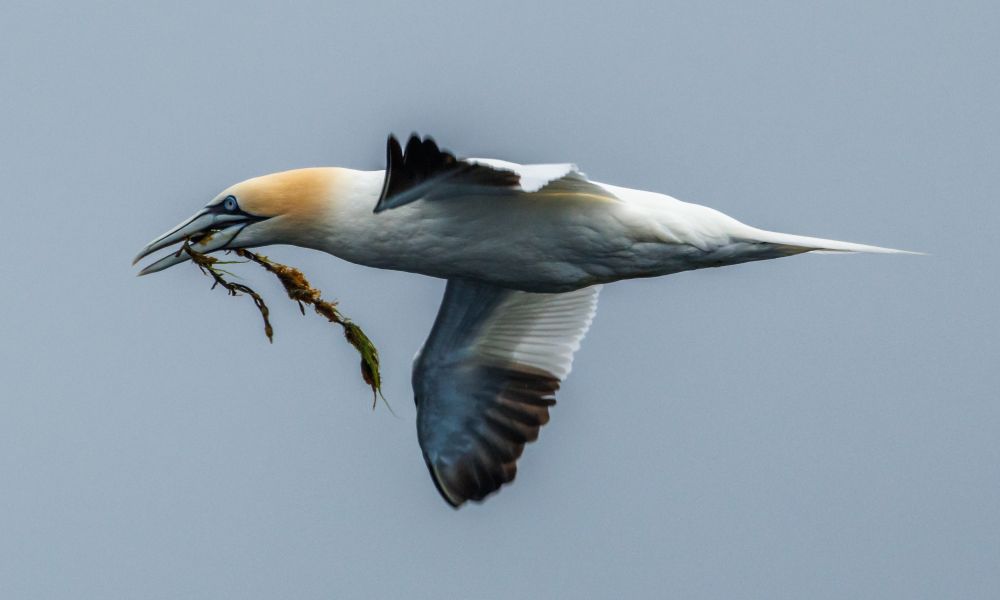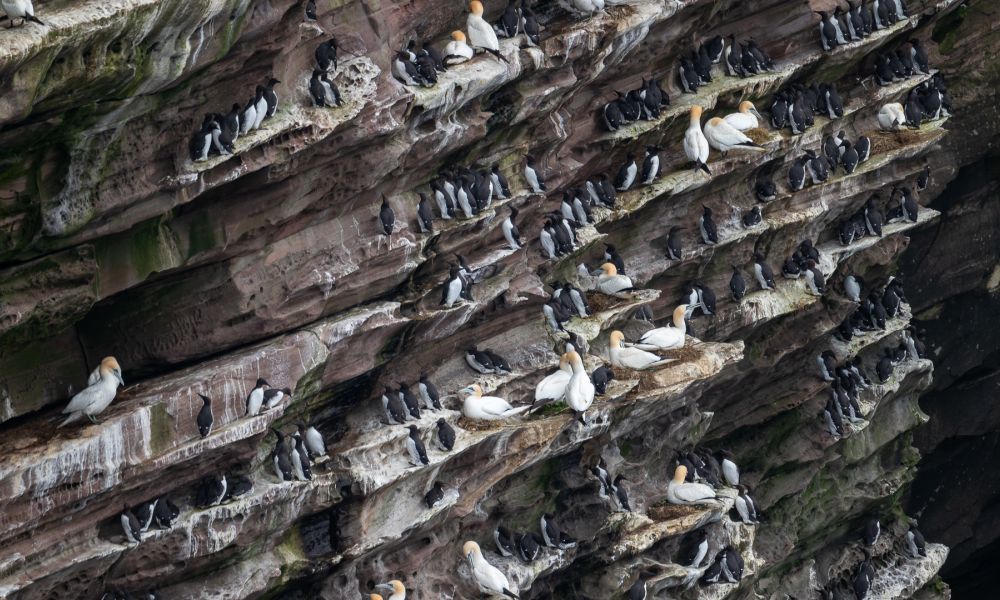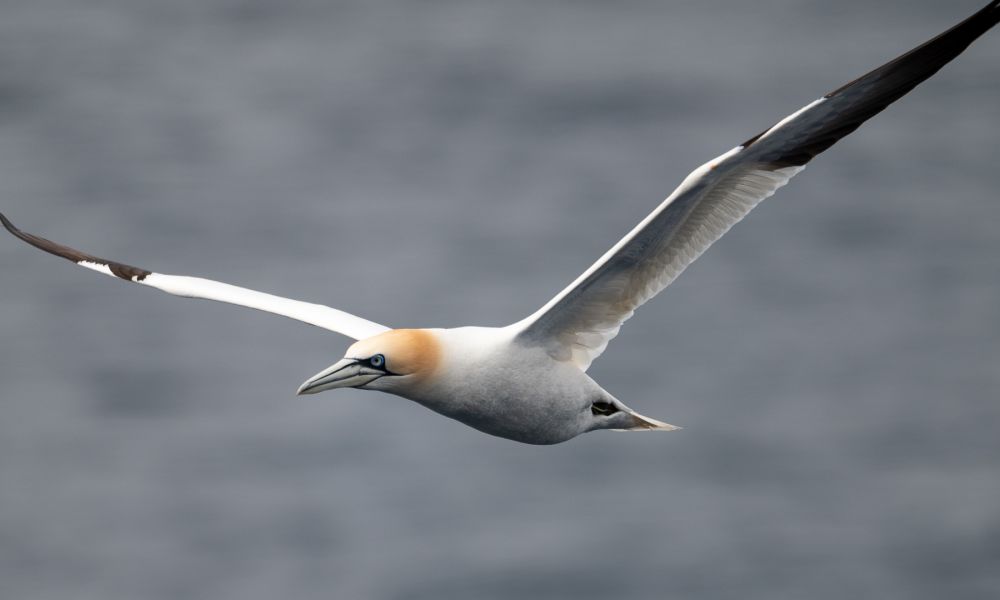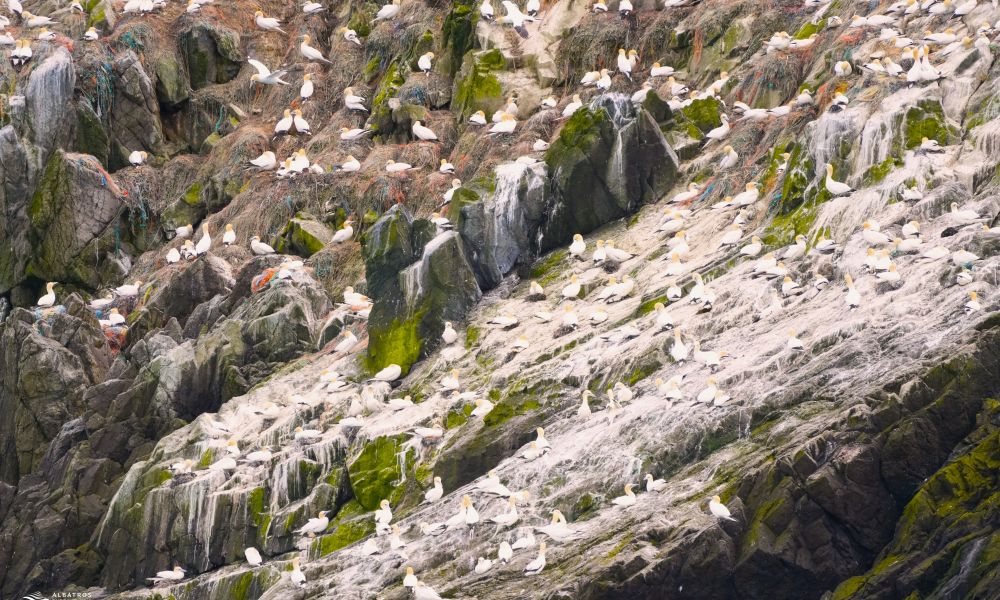What Does a Northern Gannet Look Like?
The northern gannet is a large seabird that is easily recognisable. It has long, slender white wings with a large black wingtip and is mostly white on its body. Its neck is yellow, with a big bill that has light colouring and black horizontal stripes. Its legs and feet have a black membrane, and it also has a blue ring around the eye. They can measure up to 1 metre (3.3 feet) from beak to tail tip. Furthermore, the northern gannet's wingspan ranges from 170 to 192 cm (5.6 to 6.3 feet), which is an impressive size compared to other seabirds such as the dunlin, Atlantic puffin, and rock ptarmigan.
Where Do They Live?
These big birds are commonly found in the south of the Atlantic Ocean, on islands and along the coasts of Europe. However, since 2011, they have spread northwards as breeding birds to Bjornøya or Bear Island, the southernmost island of the Norwegian Svalbard archipelago.
What Do They Eat?
The northern gannet's diet mainly consists of fish, such as herring, mackerel, and sandlance. One of the ways they hunt their prey is through their renowned diving techniques from heights of up to 30 metres (98 ft) in a single plunge to catch a fish. Although they remain underwater for just a few seconds - up to 30 seconds - the sight of these impressive dives is a spectacular experience that our guests may observe during their expedition.
What Is the Lifespan of a Northern Gannet?
Larger birds tend to live longer than smaller ones because they have slower metabolisms and are less vulnerable to predators. The Northern gannet typically lives around 17 years, but in the wild, they can reach up to 35 years. However, this lifespan is shorter compared to other seabirds we encounter during our expeditions, such as albatrosses, which can live between 30 and 50 years.
Do Northern Gannets Have Predators?
Their predators are gulls and skuas, which exploit vulnerable nests with eggs or chicks. They can also be impacted by human activities, climate change, and overfishing, as these affect their food sources.



